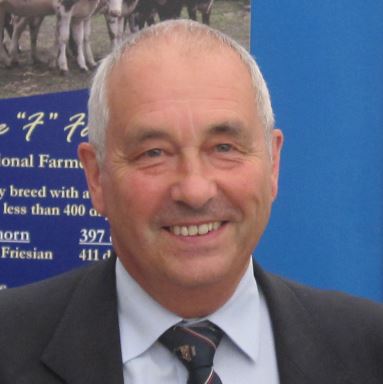



Beef Shorthorn Classification Scheme Hoped to Have Global Reach
UK – British beef’s most comprehensive classification scheme to date is hoped to accelerate the progress of the Shorthorn breed both domestically and internationally.The Beef Shorthorn Society will launch its new 14-trait linear classification scheme for females later this month to offer an “improved functional suckler cow”.

The scheme uses a second, composite classification of four categories, body confirmation, beef character, legs and feet and mammary.
While other breeds have classification schemes, the Shorthorn one is a “much more comprehensive scheme”, hoped to roll out across a substantial number of farms.
Independent classifiers from Holstein UK will deliver voluntary assessments free of charge that must evaluate first calf heifers, with evaluations on older cows being open to the discretion of individual farms.
This is according to Frank Milnes, secretary of the Beef Shorthorn Society, who says that, while the Shorthorn breed varies regionally around the world, there are many shared maternal traits.
“Farmers around the world want easy calving cows with good rump structure that can convert forage into milk,” he explained.
“This programme could be beneficial to farmers wanting to use UK semen around the world. We hope to find the animals that will take the breed forward.”
He said US ranchers farm a similar type of Shorthorn beef animal, noting a difference in leg structure across the Atlantic.
Being a maternal breed, Mr Milnes said the Shorthorn the prospect of identifying cows with strong maternal traits is “very exciting”.
“Often what happens when commercial breeders go to bull sales is they see the bull but not the dam and have little or no information about the conformation of that dam,” he said.
“In future years we want to look at bulls to breed sound, good quality females.”
Society vice chairman and Shorthorn producer, Sally Horrell, said the “exciting tool” could inform buying decisions in the future.
“You can’t always get on farm to see the dam of a bull you about to purchase,” she added.
“This type classification scheme can improve the herd and ensure we are on the right track. We can look at strong traits in an animal and see whether that has come from cows or bulls, informing the purchase of the next bull."
Scores are to be ranked poor, fair, good, good plus, very good and excellent. No animal can be rated as “excellent” until it has produced three calves.
- Excellent over 90 points
- Very good 86 – 89
- Good plus 80-85
- Good 75-79
- Fair 65-74
- Poor 50 - 64
And while this means there are some animals that could be classified as “poor”, this should not be seen as a problem.
“If you don’t classify bad and good, there’s no point in doing it,” said Mr Milnes.
“It will help to speed up breed improvement by enabling farms to more readily identify females with the strongest maternal traits within their respective herds, along with good conformation and structural soundness.”
Most farms are expected to classify all females in the first year and then follow up with first calvers into the future, which will then be re-entered for subsequent classifications, he added.
Michael Priestley
News Team - Editor
Mainly production and market stories on ruminants sector. Works closely with sustainability consultants at FAI Farms



